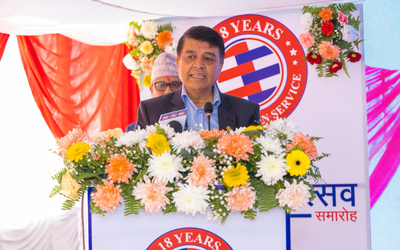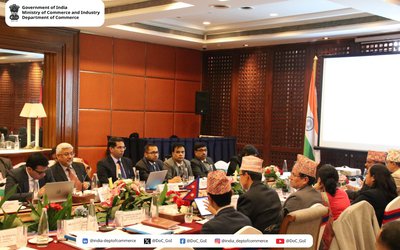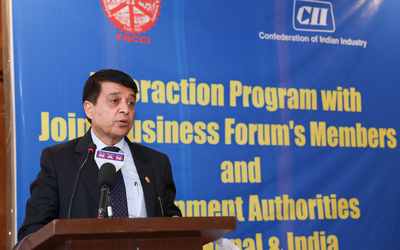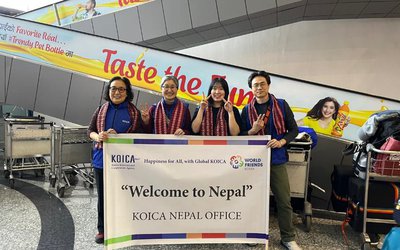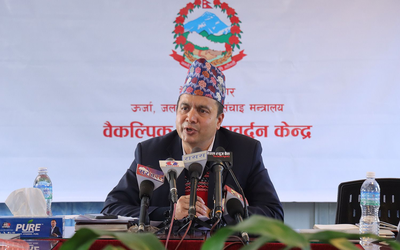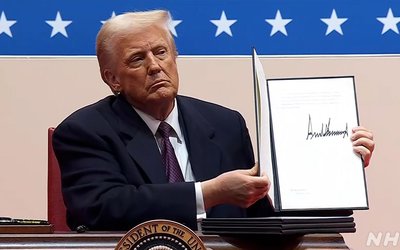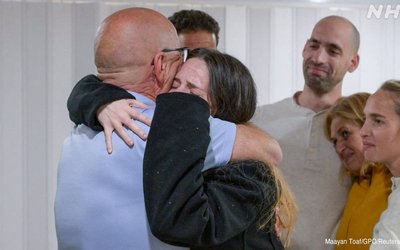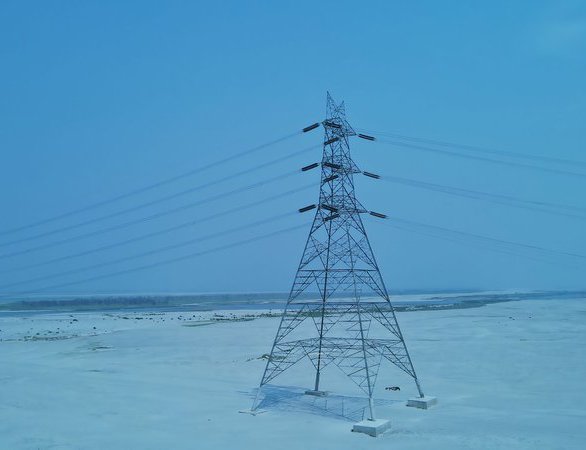
Over the course of seven years, individuals with passion, dedication, and commitment can truly make a significant impact. Kul Man Ghising, the Managing Director of NEA, has exemplified this through consistent support from minister and prime minister.
Under his guidance, NEA has made remarkable progress in the generation, transmission, and distribution of electricity. One notable achievement is the completion of the 400 kV Dhalkebar-Inaruwa transmission line, which stands as a testament to the transformative power of their efforts.
Additionally, the construction of the third largest 400 kV Hetauda substation has been finished, providing the necessary infrastructure to transmit 4,000 MW of electricity.
Despite facing various challenges such as the COVID-19 pandemic, land acquisition issues, court orders, and local opposition, the completion of Nepal's largest 400 kV transmission line in the Dhalkebar-Inruwa section is a significant milestone.
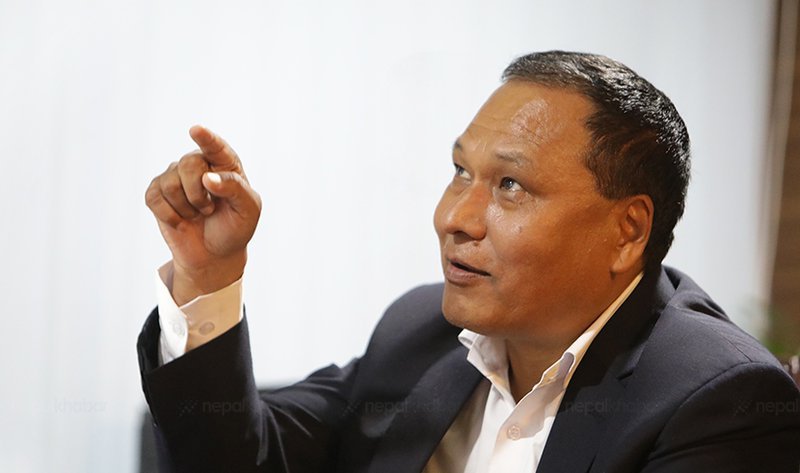
With a capacity to transmit 4000 MW of electricity, this transmission line will greatly enhance the quality of electricity supply in the country, meeting internal demand and even allowing for the export of surplus electricity to India.
The successful construction of the third largest 400 kV Hetauda Substation marks a significant achievement, establishing the necessary infrastructure for transmitting 4,000 MW of electricity. The completion of this endeavor was made possible through unwavering dedication, which involved regular site inspections and valuable guidance from Kul Man Ghising, the Managing Director of Nepal Electricity Authority (NEA).
MD. Ghising stated, "The establishment of the 400 kV Hetauda Substation at Makwanpur-11 Thanabhayang in Hetauda Subdivision has been finalized to enhance and expand the power transmission and distribution network across the nation."
The provision of reliable electricity is crucial for driving economic progress and enhancing the overall quality of life. This initiative is poised to significantly enhance the electricity supply in the area.
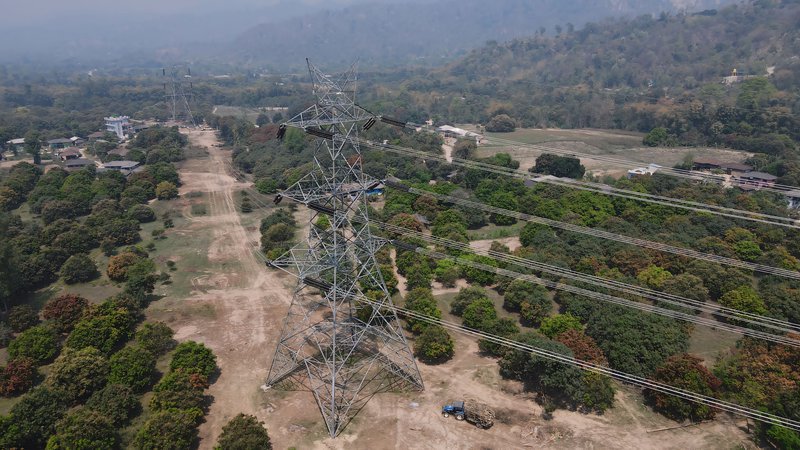
Nepal's energy development has faced numerous challenges, resulting in slow progress. These challenges include weak and inconsistent policies, the absence of an independent electricity regulator, inadequate planning, limited public sector financing, and difficulties in land acquisition and right of way for transmission lines. As a result, Nepal struggles to meet its electricity demand, which is estimated to peak at around 2000 megawatts (MW).
However, there have been recent positive developments in the operational performance of the Nepal Electricity Authority (NEA). Load shedding in the Kathmandu Valley and other major cities has significantly reduced, and measures to combat power theft have been implemented.
One notable achievement is the completion of the Dhalkebar-Inaruwa 400 kV transmission line. This section of the Hetauda-Dhalkebar-Inaruwa line aims to strengthen and enhance the reliability of the power transmission system within Nepal. Additionally, it aims to facilitate power trade between Nepal and India.
The construction of a 154 km 400 kV double circuit transmission line from Dhalkebar in Dhanusha to Inruwa Substation in Bhokraha Narsingh Rural Municipality-4 in Sunsari has also been successfully completed. This transmission line has the capacity to carry approximately 4,000 megawatts of electricity, further contributing to Nepal's power infrastructure.
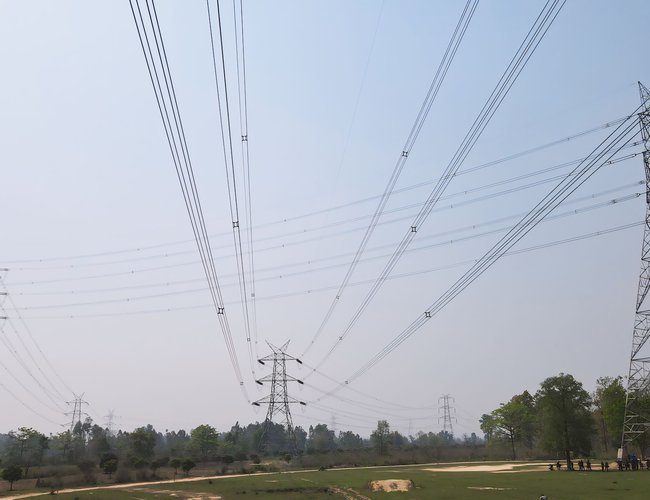
The 288 km transmission line from Hetauda Substation to Inruwa Substation at Thanabhayang in Hetauda Subdivision-11 of Makwanpur has been split into two sections: Hetauda-Dhalkebar 134 km and Dhalkebar-Inaruwa 154 km.
The construction of the Dhalkebar-Inaruwa section has been finished, while the Hetauda-Dhalkebar section is currently under construction. MD Ghising emphasized that the completion of the Dhalkebar-Inaruwa section is a significant milestone in enhancing the quality and reliability of the country's entire transmission system and boosting power trade between Nepal and India.
Due to the unpreparedness of our transmission infrastructure, the electricity import and export capacity through the operational Dhalkebar-Muzaffarpur international transmission line is limited to 800 megawatts.
Any surplus electricity can be exported to India via the Dhalkebar-Inaruwa transmission line," stated MD Ghising. He also highlighted the challenges faced during winter when the existing 132 kV transmission line between Dhalkebar and Inaruwa struggled to handle the load, leading to operational issues.
A total of 417 towers were erected along the Dhalkebar-Inaruwa section of the transmission line. Among these, 11 towers were specifically constructed in the river to facilitate the passage of the transmission line to Saptakoshi.
The foundation for the 5 km transmission line on the Koshi River required a 24-32 meter deep pile foundation. Notably, one tower was supported by 16 pile foundations. Unfortunately, two years ago, the construction faced complications when a tower near the Koshi River was swept away.
The Project Director, Shyam Kumar Yadav, highlighted various challenges that hindered the progress of the project, including the impact of the corona epidemic, flooding of the Koshi river, local opposition demanding a change in the route of the transmission line, a court order, forest land usage issues, and delays in obtaining tree-cutting permits.
Director Yadav also mentioned that due to a court order in the Siraha area, the project was halted for 4 years, leading to the need for three rounds of Preliminary Environmental Assessment (PEA).
Upon finalization, the 400 kV transmission line will have the capacity to enhance the voltage and power supply of the Morang-Sunsari industrial corridor. The Inruwa 400 kV substation was successfully completed and put into operation last year. To enhance the overall power supply to the Sunsari-Morang Industrial Corridor, the replacement of the old conductor of the Inruwa-Duhvi 132 KV transmission line with a high-capacity transmission line (HTLS) has commenced.
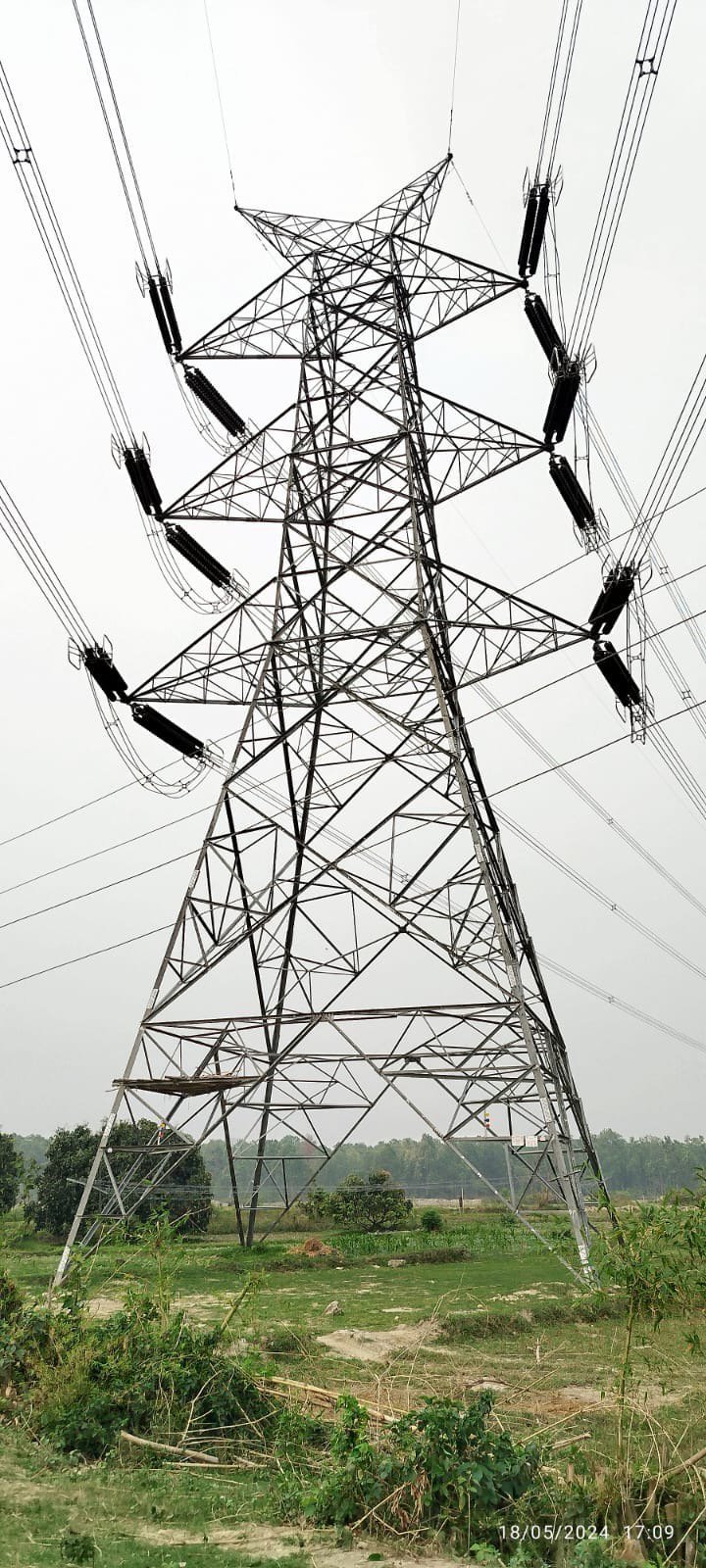
Enhancement in Morang-Sunsari
This upgrade will significantly increase the current capacity of the line, allowing it to transmit approximately 200 megawatts of electricity. Construction is underway for a 132 kV transmission line from Inaruwa to Barju, as well as a 132 kV substation at Barju.
Proposals have been made for the Inruwa Substation to facilitate power trade with India through the Inruva-Purnia line, and for trade between Nepal, India, and Bangladesh through the Inruwa-Anaramani 400 kV transmission line. The Korean Export Import (EXIM) Bank is offering concessional loans for the development of the Inruwa-Anaramani transmission line.
Yadav has announced that now that the Dhalkebar-Inaruwa section has been completed, all available manpower will be dedicated to the construction of the Dhalkebar-Hetauda section. Currently, the focus is on laying the transmission line wire from Dhalkebar to Hetauda, with 45 km already completed.
However, there have been obstacles in the construction process for the past 7 years, as some residents of Hetauda sub-metropolitan wards 15, 16, and 17 in the Hatia areas have been demanding a change in the transmission line route. As a result, 16 towers are yet to be constructed, with 14 in the Hatia area and 2 in Thanabhayang in Hetauda-11.
The Hetauda-Dhalkebar-Inaruwa transmission line project spans across the Hill, Shivalik Chure, and Terai regions. It passes through 10 districts, namely Makwanpur, Bara, Rautahat, Sarlahi, Mahottari, Dhanusha, Siraha, Saptari, Udaipur, and Sunsari.
The agreement was finalized in January 2069 to finish the construction within a span of 30 months. The Hetauda-Dhalkebar-Inaruwa 440 kV transmission line runs mostly parallel to the current 132 kV transmission line and the East-West highway.
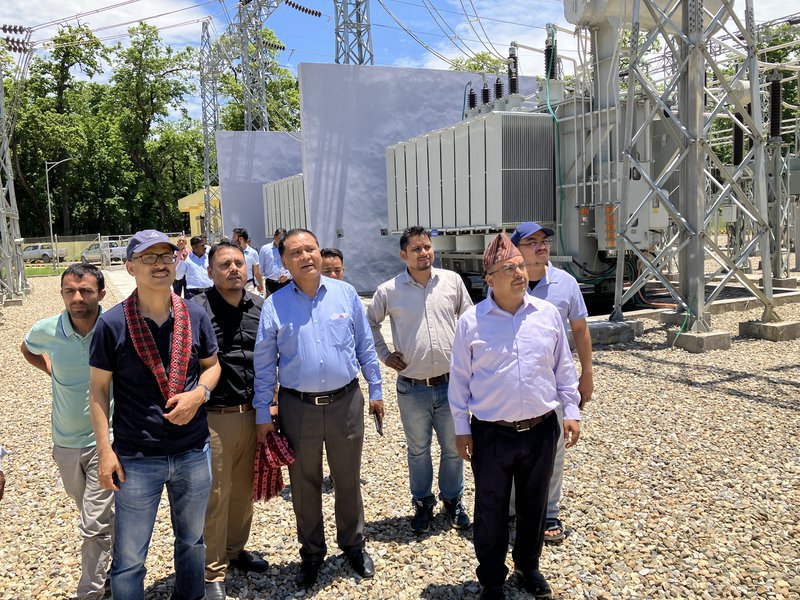
The transmission line's right-of-way measures 23 ÷ 23 meters on either side of the center. The project will involve clearing 518 hectares of forest and acquiring 30 hectares of private agricultural land. A total of 475 hectares of private land and 171 houses and other structures will be impacted within the right of way.
So far, approximately Rs. 5 billion has been allocated for right-of-way compensation for the Dhalkebar-Inaruwa segment. This initiative, with an estimated cost of US$170 million, was launched as part of the Nepal-India Power Transmission and Trade Project, with contributions from the Nepalese government and authorities, as well as concessional loans from the World Bank.
The World Bank loan period has concluded, and now the government and authorities are investing in the remaining work. The completion of the 400 kV Hetauda Substation, the third largest in Nepal, will greatly enhance the power supply infrastructure, allowing for the transmission of 4,000 MW of electricity.
This development will not only meet the internal demand for power but also enable the export of surplus electricity to India. In recent weeks, NEA has made significant progress by finishing two major projects with a combined capacity of over 4000 MW for power transmission from east to west.
MD Ghising stated that the construction of the 400 kV Hetauda Substation in Makwanpur-11 Thanabhayang, Hetauda sub-division, will strengthen and expand the power transmission and distribution system in the country.
NEA requires the assistance of local political leaders, elected representatives, and local administration to eliminate the hindrance in Hetauda, enabling Nepal to establish a power transmission system from east to west. According to MD. Ghising, as progress is being made in this area, it will soon be finalized.
For a dependable and high-quality east-west power supply in the country and for power exchange with India, the Dhalkebar Substation is the primary automatic substation in Nepal, followed by Inaruwa as the second, and Hetauda as the third largest substation in the nation. The 400 kV Hetauda substation, Nepal's third largest, utilizing Gas Insulated System (GIS) technology, has been successfully completed and inaugurated on Friday (June 7, 2024).
Furthermore, the construction of 220 and 132 11 kV substations at Thanabhayangmani under the Nepal-India Electricity Transmission and Trade Project has also been finished and inaugurated on the same day.
The completion of the Hetauda Substation has resulted in the establishment of an infrastructure capable of providing approximately 4,000 MW of electricity.
Following the completion of the Hetauda-Dhalkebar-Inruwa 400 kV transmission line project, it will be possible to transmit 4,000 MW of electricity from Dhalkebar in the east to the west. The construction of the Dhalkebar-Inaruwa section of the 400 kV transmission line is currently in its final stage, while the Hetauda-Dhalkebar section is still under construction.
However, the construction of the transmission line is facing obstacles due to the opposition of local residents in wards 15, 16, 17, and 11 of Hetauda sub-metropolitan city. The construction will proceed in areas where there are no such obstacles.
Ghising, the Managing Director of Nepal Electricity Authority (NEA), has stated that the power will be supplied locally from the Hetauda Substation, which will contribute to a more reliable and higher quality power supply in Hetauda, Bharatpur, Simra, and Birgunj regions.
MD Ghisingh has stated that the hydropower projects in the central region of Nepal will contribute to the national transmission grid and any excess power can be exported to India through the Hetauda-Dhalkebar 400 kV transmission line.
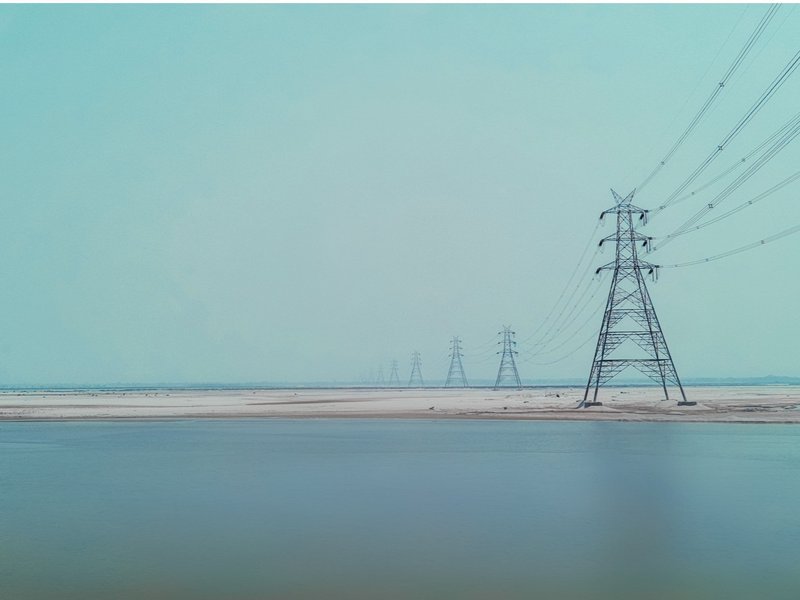
This will greatly facilitate the power flow. Shukar Devkota, the project manager, has mentioned that the Hetauda substation has been designed to accommodate future expansions based on requirements. The Millennium Challenge Corporation (MCC) will construct the 400 kV double circuit transmission line from Ratmate in Nuwakot, which will be connected to the Hetauda substation.
Devkota also confirmed that the necessary infrastructure has been completed at the Hetauda substation. The construction of the Hetauda, Dhalkebar Inruwa 400 kV transmission line is part of the National Electricity Development Decade Program and has been jointly funded by the government and NEA.
The completion of all three substations under the project has been achieved. In December 2018, a contract agreement was signed for the construction of the Hetauda 400 kV substation.
In December 2018, the contract was awarded for the construction of the Hetauda substation, which operates at 220-132-11 kV. The Nepal India Electricity Transmission and Trade Project, in collaboration with the government and the authority, along with a concessional loan from the World Bank, undertook the construction of the Hetauda substation. The estimated cost for the Hetauda substations, operating at 400, 220, and 132 kV, amounts to three billion rupees.
The construction progress has faced challenges due to the global spread of the corona epidemic and the subsequent restrictions imposed to control and prevent it. As a result of the epidemic, there were delays in the arrival of various equipment and technicians required for the substation connection, leading to delays in the project's construction for other reasons as well.
Despite these obstacles, the NEA has successfully accomplished two significant tasks in recent weeks, which will have a positive and lasting impact on the national economy.

Keshab Poudel
Poudel is the editor of New Spotlight Magazine.
- The Question Arises: Do Former Prime Ministers Prachanda, Nepal, And Dr. Bhattarai Support The Terror actions Of Hamas?
- Dec 11, 2024
- MD KUL MAN GHISING: December 25 Deadline For Upper Tamakoshi
- Dec 09, 2024
- ADB's REFP Reintegration of Returnee Migrants
- Dec 02, 2024
- The Relationship Between Kosovo And Nepal Is Robust: ELBERT KRASNIQUI
- Nov 29, 2024
- ADB’s REFP: Women (Em)Power
- Nov 28, 2024
